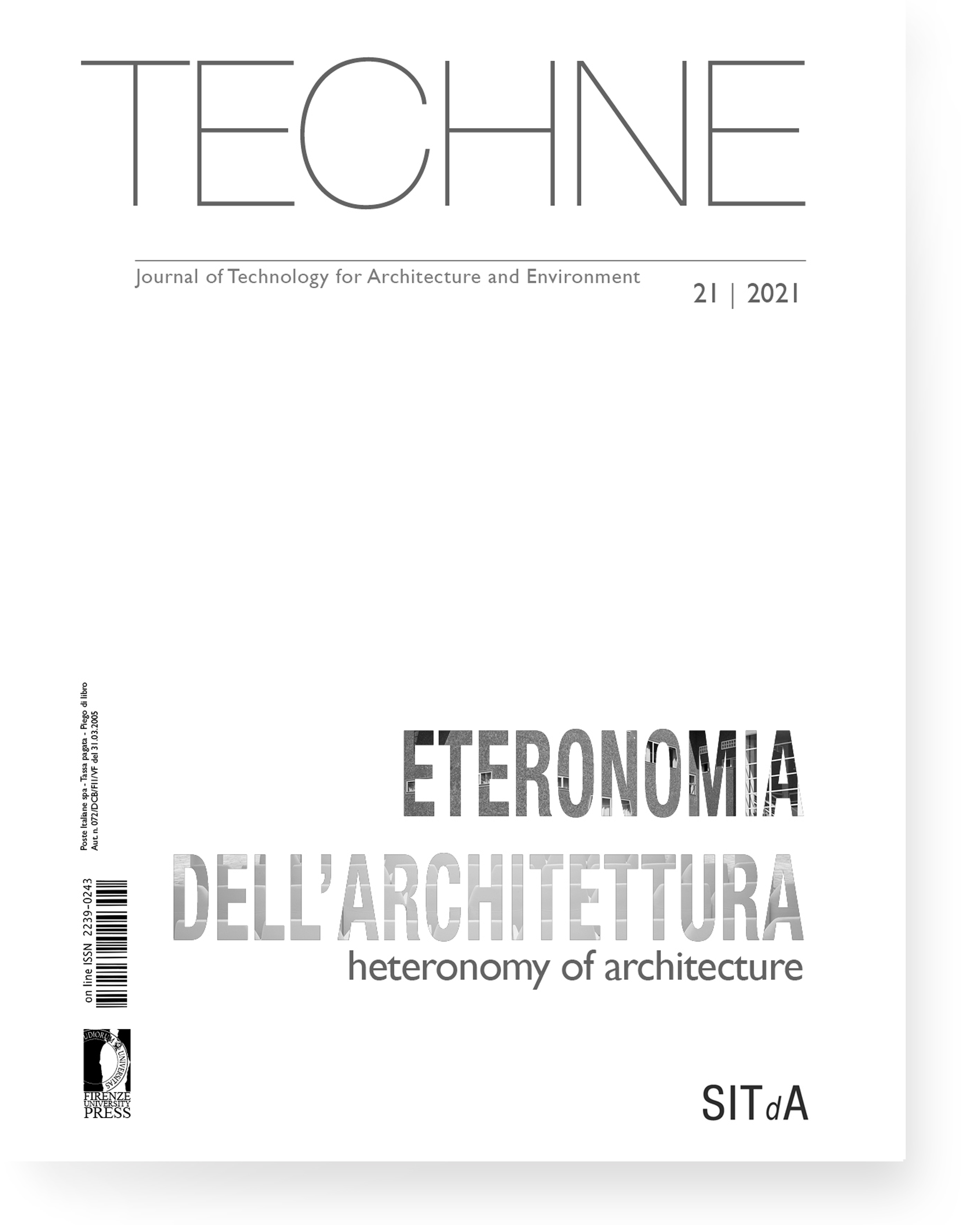Published 2021-05-25
Keywords
- .
How to Cite
Abstract
Introduction
«I have never worked in the technocratic exaltation, solving a constructive problem and that’s it. I’ve always tried to interpret the space of human life» (Vittorio Garatti).
Vittorio Garatti (Milan, April 6, 1927) is certainly one of the last witnesses of one “heroic” season of Italian architecture. In 1957 he graduated in architecture from the Polytechnic of Milan with a thesis proposing the redesign of a portion of the historic centre of Milan: the area between “piazza della Scala”, “via Broletto”, “via Filodrammatici” and the gardens of the former Olivetti building in via Clerici. These are the years in which Ernesto Nathan Rogers established himself as one of the main personalities of Milanese culture. Garatti endorses the criticism expressed by Rogers to the approval of the Rationalist “language” in favour of an architecture that recovers the implications of the place and of material culture. The social responsibility of architecture and connections between architecture and other forms of artistic expression are the invariants of all the activity of the architect, artist and graphic designer of Garatti. It will be Ernesto Nathan Rogers who will offer him the possibility of experiencing these “contaminations” early: in 1954, together with Giuliano Cesari, Raffaella Crespi, Giampiero Pallavicini and Ferruccio Rezzonico, he designs the preparation of the exhibition on musical instruments at the 10th Milan Triennale. The temporary installations will be a privileged area in which Garatti will continue to experiment and integrate the qualities of artist, graphic designer and architect with each other. Significant examples of this approach are the Art Schools in Cuba 1961-63, the residential complex of Cusano Milanino in 1973, the Attico Cosimo del Fante in 1980, the fittings for the Bubasty shops in 1984, the Camogli residence in 1986, his house atelier in Brera in 1988 and the interiors of the Hotel Gallia in 1989.






